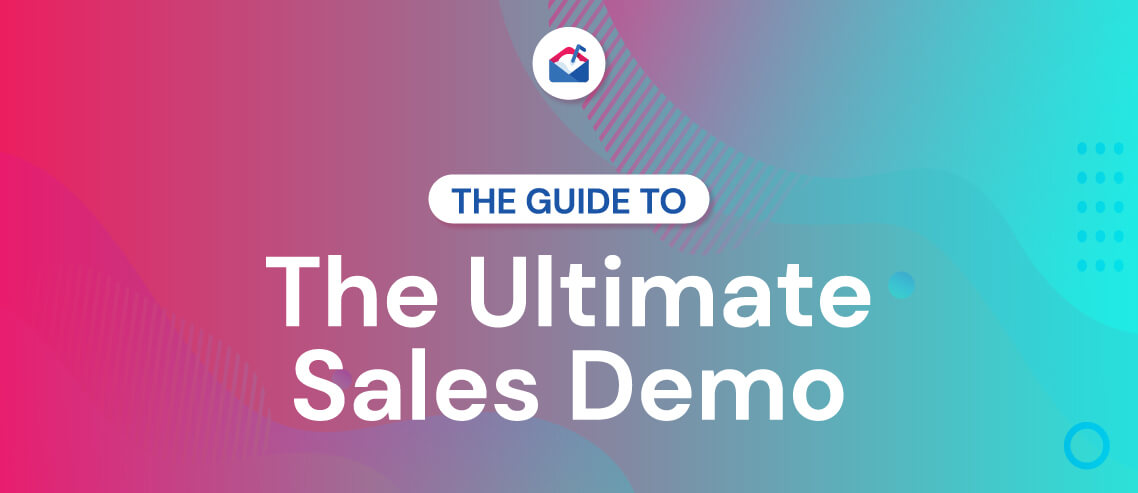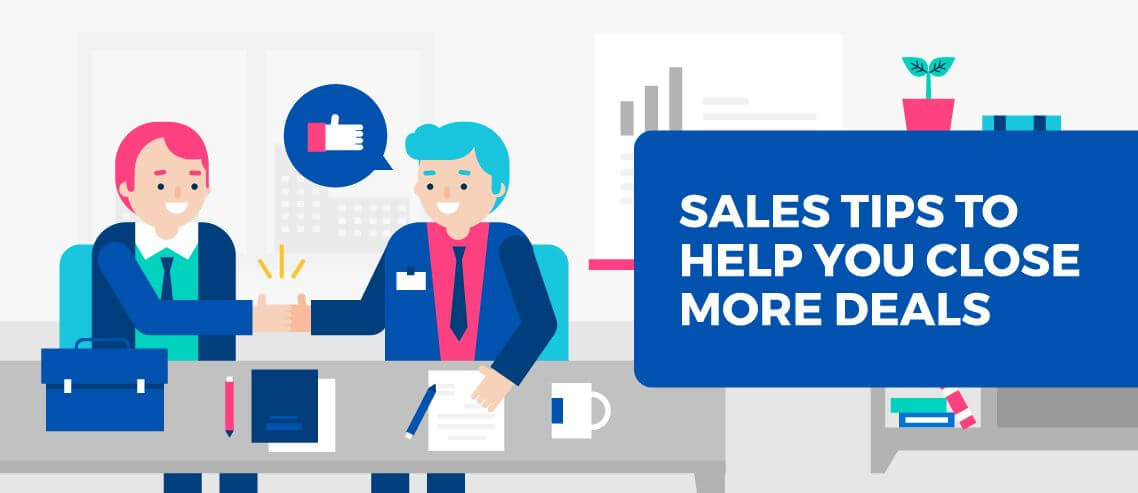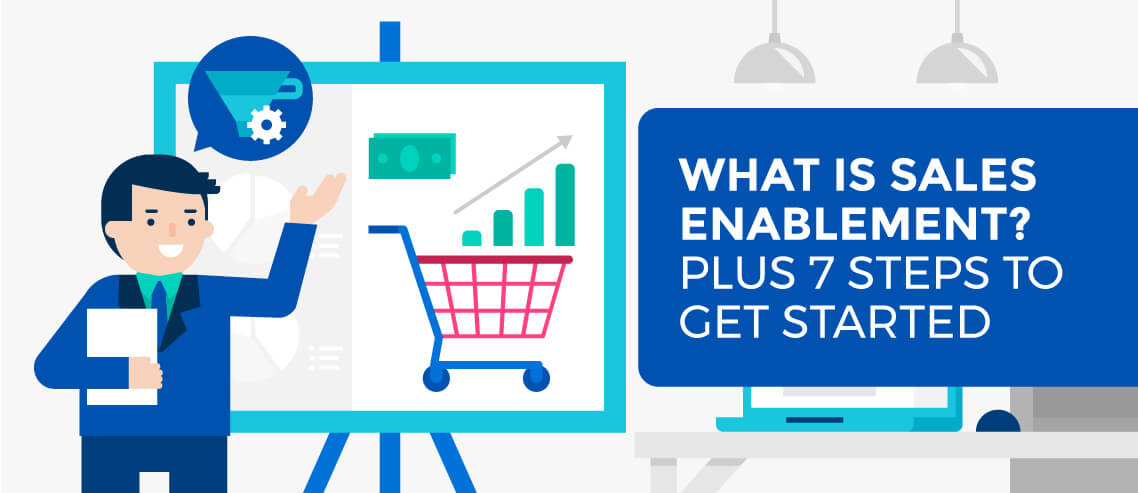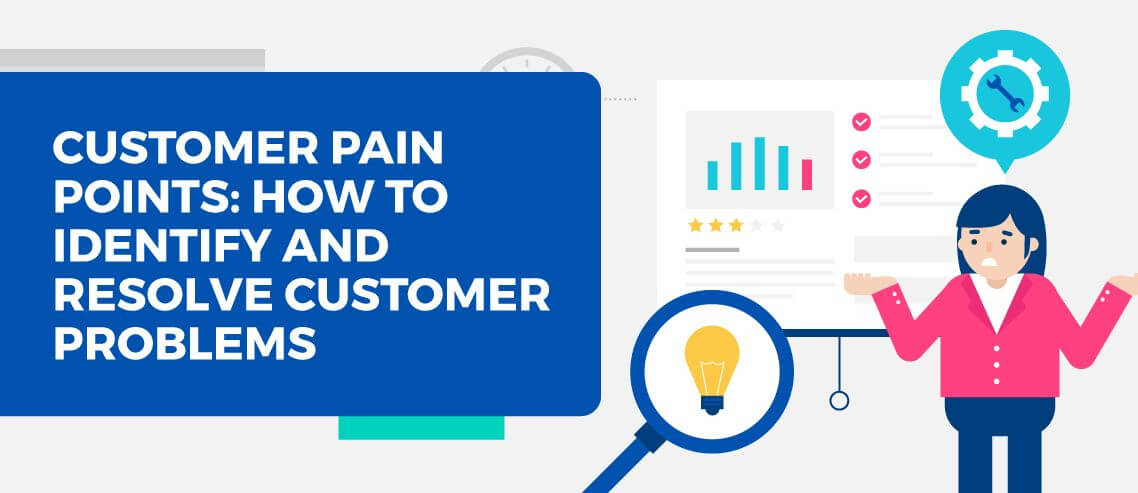The Guide to the Ultimate Sales Demo

Contents
A sales demo is just like looking under the hood of a car before you buy it. You have an opportunity to show your amazing product to the customer and help them understand how it can solve their pain.
According to Lusha, the average lead conversion rate is 7% for the software/SaaS industry. With such low conversion rates, it’s even more crucial to deliver a stellar demo and convert the customer into a paying customer.
Make no mistake, the sales demo is the most important part of the sales process. You need to be prepared across every stage of the process, right from presentation to follow-up.
To ensure that you deliver the best demo, we have crafted this guide that will take you through the process, help you understand the best practices, and at the same time remind you to avoid the obvious mistakes you’re prone to make during the process.
What is a Sales Demo?
To put it simply, a sales demo is the process where you demonstrate the features and capabilities of your product and help the customer understand how it can solve their problems. The outcome of a sales demonstration is to close a deal and clock some revenue for the company.
For instance, if I were to demo Mailshake to a customer, here’s how I’d go about doing it:
- I’ll research the customer first. This includes understanding their pain points, business model, and the industry they serve.
- From that research, I’ll personalize the demo to my customer so that they can understand precisely how Mailshake can help them get more business through cold outreach.
- Finally, I’ll go over our top features like omnichannel sales sequences, deep personalization, and endless integrations that will ensure Mailshake fits into their existing systems seamlessly.
I’ll go over the above topics in more detail as we progress with the article but that was just a glimpse of what a great sales demo looks like.
The 4 Steps to Conduct the Perfect Sales Demo
Sales demos can make or break a deal – it’s that important. You either close a customer and bring in dollars or they sail away on your competitor’s boat. In short, you need to be prepared, and to do that, you need a battle-tested process.
For that, I recommend this simple 6-step process to delivering a deal-closing demo.
1) Thoroughly research your customer
In the words of Mike Gospe, “Whoever understands the customer best, wins.” This holds true for sales demos. As the sales rep delivering the demo, you need deep knowledge about your customer, their pain points, their business model, and the industry they play in.
Here’s a quick checklist of the things you should include in research:
- What are they selling?
- To whom they are selling it?
- Who are the potential decision-makers at the company?
- What industry they are in?
- Who are their competitors?
- What tool are the competitors using to solve the pain point your tool solves?
- Who is sitting at the demo and what are their likes/dislikes (hint: sift through social channels)?
Once you have figured out the above, you’re in a good position to personalize the sales demo journey.
2) Prepare before the meeting (but be ready to deviate)
Before you get to the proverbial “discovery call” stage, there are a few things you need to prepare so that things go smoothly.
Confirm the demo
The last thing you want is to get stood up by your customer. To avoid that, here are a few things you can do:
-
- Send the demo confirmation mail a few days in advance along with the calendar invite.
- Add alternative time slots or share your scheduling link in case the customer wants to change the date/time of the demo.
- Send a reminder mail one day before the call. You can also automate this with scheduling softwares like Calendly.
Personalize the script
People buy from people. To personalize the demo, plan your script accordingly. When I say the script, I don’t mean write out a 5-pager of what you’d say. It’s to do with what points you want to highlight, what questions you might encounter, which case studies you’d refer to, etc.
Lean into research and try to predict what questions they might ask and how you’d answer them. Once you do that, it will be easier for you to personalize the process.
For example, you already know that the person taking the demo uses a competitor tool for a live chat on their website. Unless you’re extremely lucky, they’re sure to bring up that competitor. If that’s the case, you must differentiate how your live chat software is better and why they should switch.
Proper technical setup
Get this; 70% of respondents in a survey indicated a loss of credibility for the speaker whose tech set-up is glitchy.
Like I mentioned before, a sales demo can determine a gain or loss in revenue and your tech setup shouldn’t be the reason you can’t close a deal. Here’s a quick checklist for a great tech set-up:
-
- Get a fast & stable internet connection.
- Invest in a good conferencing solution like Zoom with the necessary features like screen-sharing, recording, etc.
- Check your audio; buy a separate mic if your laptop’s audio is poor.
Be ready for anything
Yes, you have it all planned but be ready to deviate. There are so many things that could change:
-
- The customer might ask about a different feature that you never expected.
- They can change times 5 minutes before the call.
- They may send a set of 10 questions before the call to understand whether it’s worth their time to take the demo.
Preparation is instrumental to running the perfect demo but at the same time, you shouldn’t freak out if things don’t go your way.
Remember this: If you’re an expert when it comes to your product and you have done ample research on your customer, you can handle every situation that’s thrown at you.
3) Get the discovery call right
Unless you’re the Houdini of sales, it’s rare to close a deal on your first call with the customer. The discovery call is the first time you’re meeting the customer face to face and you would want to capitalize on that interaction & get the maximum ROI out of it.
The goal of the discovery call is simple – you want to know whether it’s the right customer for your product.
You have researched your customer well. Here’s a step-by-step process to ace your discovery call:
Set the agenda
From the get-go, you should set the agenda of the call. You should inform the prospect that it’s a discovery call and it is to determine if your product can solve their problems. This ensures transparency and an effortless call for both parties.
Ask qualifying questions
To understand if you can help this customer, ask the right questions. Here are a few questions you can ask:
-
- How are you currently solving the problem?
- What’s wrong with the current solution?
- What other tools did you use to solve that problem?
- What were the pros & cons of those tools?
- Why do you need to solve it today?
- How much time & budget have you allocated to solve this problem?
FYI: These are generic questions that you can use for any industry. I recommend personalizing these questions as per your product and the customer you’re doing the call with.
Determine if they’re a right fit
Typically speaking, if their responses to the above questions (or similar ones) hit the mark, you can confirm that the customer is an ideal fit. At the same time, you shouldn’t be afraid to disqualify them if they don’t.
For example, if everything’s good but they’re falling short on budget even after your discount, you might need to disqualify them.
Schedule the next call (before hanging up)
It’s super useful to schedule the next call (the main demo) while the discovery call is still on. If they’re qualified, you can ask the customer to tell you their preferred times.
Once they do that, match it up with your calendar and send them an invite while on call. This avoids the issue of following up over emails and scheduling a time, which can go on for days.
Send a follow-up email
Once your call is done, it’s your responsibility to send a follow-up email with a summary of everything discussed as well as the date & time for the next meeting. This also positions you as a rep who’s meticulous about the details & is excited to work with the customer.
4) Ace the demo
The discovery call is an important prelude to the main demo. The main demo is where you close the deal. This is where you highlight the features that are going to solve the customer’s problems and explain why your solution can do it better than the rest.
Here are a few steps you can take to conduct a deal-closing demo:
Start with a simple & human intro
You don’t get to business when meeting over lunch, do you? A sales demo is no different. Ask them where they are from, what’s new in town, etc. Be human and you’ll be treated like one.
Next, introduce yourself and your company. Talk to them about why your company exists and how you’re solving a pain that’s plaguing the world.
Summarize the previous conversations
By this time, you have already interacted with the customer over email or a call. You can quickly remind them about what you talked about and how they decided to work with you in the first place.
Explain your solution
Now’s the time to explain your product and map it to their solution. Typically known as solution sales, this ensures that you don’t overload the customer with features but only show the ones that will solve their problem.For instance, if the customer asks how they can automate cold outreach, you can explain how Mailshake’s automated cold outreach can help you send personalized cold emails at scale with 99.9% deliverability.
Leave time for Q&A
You should always keep 5-10 minutes at the end of the demo for Q&A. This is perhaps the most important part.
You want your customers to ask questions and shoot objections because once you do answer their questions and tackle the objections, the likelihood of closing a deal is multifold.
Outline the next steps
Awesome! You have now delivered an excellent demo. That’s it, right? Nope! The customer should always be in the know. Post demo, you should clearly outline the next steps.
Whether it’s handing over to a Customer Success professional or signing up for the free trial, let them know that. Under no circumstances, they should come back to ask, “what next?” because that can be detrimental to closing the deal.
7 Tips for a Winning Sales Demo
Simply conducting a demo isn’t enough; it needs to be phenomenal for it to convert into a sale. It’s not easy but there are a few tips that can aid you with that.
1) Customize the demo for each prospect
Put the customer research to good use by personalizing the demo for each prospect. Why? Simple; not every customer has the same needs.
For example, let’s say you’re selling a task-based productivity platform. If your research can suggest what set-up you should show during the demo, it’s gold.
Are they going to use it for their Marketing department or the Product department? You can accordingly customize the dashboards with dummy tasks that pertain to the respective department.
If you execute this properly, it will allow the user to easily guess how the product will look in action if they start using it regularly.
2) Listen more, talk less
According to a survey by HubSpot, 69% of the buyers suggested that to create a positive sales experience, reps should listen more.
As a rep, you need to practice active listening. It requires you to listen, understand the customer’s point, take a pause, and then respond appropriately. It also allows you the chance to ask meaningful, open-ended questions. These questions help you clarify the lingering doubts in your mind and enrich what you already know.
3) Solve problems first
Time and again, I have seen reps jump into explaining the features like it’s their job to orate the product details.
No! The customer just wants to know how to solve their problem. It just so happens that your tool can help them solve it better & more efficiently. First, ask the right questions and clearly understand their pain points. Then explain how your product can solve that pain easily.
For example, don’t say this (although it’s correct):
“Mailshake can help you run a cold emailing campaign at scale.”
Say this instead:
“We know you’re trying to generate more leads for your Dental Clinic and are giving some thought to run a cold email campaign. You can do it manually but that will take hours of effort – the kind of time you may not have. Alternatively, you can automate the campaign and it will generate leads passively. By the way, you can set up that campaign on Mailshake in 5 minutes tops!”
4) Include data whenever possible
We often use a dummy account with fake data during the demo for our convenience. But that doesn’t win over a customer.
In the spirit of personalizing the sales demo process, put real data into the input fields during the demo. This means typing out actual names and real numbers and generating reports that make sense in day-to-day life.
5) Keep it conversational
Think of a sales demo as a dialogue between two adults trying to come to a general conclusion, i.e., whether the product is a good fit for the customer.
Your demo shouldn’t turn into a TEDx speech where you can just go on and on about the benefits of the product. Pause often, and allow the customer to ask questions, share concerns, praise a feature, talk about how cool your Zoom background is.
You can go a step further by guiding the customer to use a part of the product during the demo itself. This adds an extra layer of attention to the customer’s mind and they become more engaged with the product even before the purchase. The outcome? It leads to a faster sale if they like using it and finds it helpful and intuitive.
6) Flexibility is a flex
You might have a whole process laid out in your head and you have also prepared the best script based on the research. This is good; you do need it. But at the same time, be flexible.
You might need to customize the conversation mid-demo. Why? The customer started showing interest in a particular feature. If that’s the case, show them how it works, talk about the common use-cases of that feature, etc.
Being flexible with your playbook allows you to personalize the process for the customer and that’s why it makes for a great tip when conducting demos.
7) Be ready to disqualify
This is our last sales demo best practice and it’s super-duper important. There’s a saying, “You’re not born to please everyone.” Well, the same goes for your product; it wasn’t created for everyone to use.
So, if you see that a customer is not the right fit to use and benefit from your product, be prepared to disqualify them.
6 Mistakes Reps Make on a Sales Demo
Although every sales rep is aware of the best practices to conduct a stellar sales demo, there are a few mistakes that can creep in. Be wary of them and avoid them at all costs.
1) Assuming you know what the customer needs
More often than I can count, sales reps make the mistake of assuming that they know what the customer needs.
Granted that you have done in-depth research on the customer but that still doesn’t make you an expert. Why? There are several holes in your knowledge. It’s only when you start talking to the customer, the real stories unfold.
For instance, you might be under the assumption the customer needs the best live chat solution in the market with multi-level automation. Little did you know that they’re choosing Intercom over your product simply because they offer an integrated product suite and you only offer a live chat solution.
2) Disparaging the competition
Bad-mouthing the competition is not only immature, but it also shows how much you fear your competition. It also shows how little confidence you have in your product that you’re trying so hard to stand out.
Instead of doing this, focus on solving the customer’s problems with your solution, explain the features meticulously, overcome objections, and how it can make the customer’s life 1% simpler. This will alleviate the need to go head-to-head with the competition and return your focus to selling the product.
3) Focusing only on the person with the highest rank
It’s easy to think that you should spend the most energy on whoever has the most important title. But when you’re in a meeting with multiple people, you need to consider everyone’s needs. They have a seat at the table for a reason regardless of their rank.
4) Talking without breaks
A big mistake in a sales demo is to talk non-stop. Sales demos are supposed to be conversational and engaging but sometimes it’s to get carried away and turn the call into an uninterrupted speech. This is bad – if the customer loses interest during the call, the chance of closing the deal decreases drastically.
To avoid this, ask questions. Your cue to ask questions could be:
- When you finished explaining a feature, ask them how do they think the feature would help them with their goals?
- After you finished explaining a module, you can pause and ask them whether they had any doubts before moving on.
- When you have finished explaining all the features, you could ask them what other ways would they use the product?
These questions not only enrich your understanding of the customer’s needs but also ensures that they are engaged through the end of the conversation.
5) Going beyond the scheduled time
This is straight-up rude if I being honest. Everyone’s busy and their time is extremely valuable. So, if you’re going over time, you can do two things:
- Politely ask the customer if they’re free for five more minutes as you would need that time to finish explaining everything.
- Practice, practice & practice some more to finish the demo within the stipulated time.
It’s fine to go beyond time if the customer agrees to it. Never force it on them; if they can’t do it, say that you’ll explain the rest over email or through a recorded video.
6) Ending the call without clear next steps
I discussed this before and reiterating this, you must lay out the next steps before ending the call. Hence, you have to plan ahead to keep the last 2-5 minutes to peacefully discuss the next steps.
This can be as simple as telling them that you’d be sending them an email and they will need to sign-up for the 30-day free trial. But unless you deliver this message, they will not expect it and may miss your email altogether or accidentally hit spam.
Parting Thoughts
A sales demo is all about listening to the customer, understanding their problems, and trying to solve them with the help of your product. If you follow this guide accurately, you can knock any sales demo out of the park and close the proverbial deal every single time.





